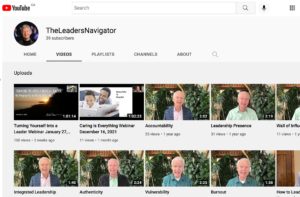Michelangelo was asked once how he carved and created such magnificence and beauty from a slab of cold marble: He reportedly replied, “I didn’t do anything. God put Pieta and David in the marble, they were already there. I only had to carve away the parts that kept you from seeing them.”
For the past three and a half years, since walking with my brother through his cancer journey and his passing in February, I have taken much time to stop and reflect about my life and the purpose of my work. I have been setting aside time to refine my focus, clarify my personal mission and vision, and re-examine my calling and my commitments. Death, as painful as it is, can be strangely and amazingly healing, as it magnifies what truly matters in your life.
As I slowly emerge from this experience, two renewed agreements to myself and others arise: First, I am resolved to be more present in the present moment. Life is lived now. Not tomorrow or yesterday. We simply never know when our time is up. Facing death squarely and honestly helps us fully see what is around us now. Paradoxically, the realization that the life we have today won’t last forever enables us to appreciate and experience it more deeply. It is the impermanence of life that makes it possible to realize it’s incredibly precious value.
Second, I have never been more committed to guiding leaders in all walks of life to their authentic self and realizing the integral value of caring in leadership and life. This is the work I feel most called to do. There is an old Gnostic tradition that believes we don’t invent things, we just remember. That’s what the authentic journey is – remembering who we are meant to be and bringing that to life.
At Thomas More College in Kentucky, there stands a magnificent sculpture of a man sculpting himself, illustrating the amazing capacity to create yourself. The effigy is of a man hunched over his knees with a chisel in hand, carving his own body. Below his knees is a square block of bronze. As you look at his face, which is firmly concentrating on his sculpting, you see that he is blindfolded, creating himself by looking inward. The core of leadership, it turns out, requires reaching within ourselves and bringing the full spectrum of ourselves to our life and our work.
The Greeks understood the internal work that is necessary to sculpt ourselves. The eyes of their statues have no iris. They were chiseled looking inward, focusing on the back of their eyes. This illustrates the essence of leadership as a journey from within, a kind of consciousness that is creating a world out of what is inside of you.
The ending of a relationship, a betrayal, trauma, death, facing an addiction, living an unfulfilled dream, or simply expressing ourselves artistically – are all opportunities for the chisel to penetrate the hardened stone of the walls that surround us and protect us from living the life we are meant to live. Like the work of a great sculptor, the work of the authentic journey is not neat or linear and it can be messy. Far too many people in our culture decide it’s just not worth the journey and fall asleep, living lives, described by Henry David Thoreau, of “quiet desperation.” At some point in our lives, however, the desperation can no longer be quieted, and our authentic presence must come forth in the service of the world. This is the core of leadership.
I have had many experiences that were painful and often traumatic at the time, but were actually necessary and profound teaching moments providing a passage to a deeper connection to my authentic self. At the time they seemed to be random occurrences that I coped with the best way I could and I didn’t know that they were leading me to my destiny. Below the surface of my “traumas,” there was the power of a great sculptor, calling and preparing me to connect with a deeper essence that addressed the fundamental questions, “What is it, in my heart, in my soul, that I must do and be? Who am I, really?”
When National Hockey League player Theo Fleury announced publicly that his former junior hockey coach had sexually abused him, it helped release him from the internal trauma he had been suffering. Over the years, that trauma had driven him to drugs, alcohol, and promiscuity. He’d managed to hold the secret inside himself throughout his impressive sixteen-year NHL career, but it was steadily destroying him. Through a concerted and courageous desire to look inside and heal himself, Theo is now helping to heal others. By speaking out and becoming an advocate for sexual abuse victims, he has brought healing and recovery to thousands of hurt and struggling individuals who have experienced similar traumas in their lives. Looking within and then having the courage to bring what you find to serve others is not just good for the soul. It’s good for the world. This is the work of authentic leadership.
This fall I am planning to launch a public Leadership Presence Program – perhaps a year-long development opportunity – for discovering and strengthening your authentic leadership. Stay tuned, and let me know if you are interested in learning more.
“Often people attempt to live their lives backwards; they try to have more things, or more money, in order to do more of what they want, so they will be happier. The way it actually works is in reverse. You must first be who you really are, then do what you need to do, in order to have what you want.” – Margaret Young, American singer and comedian


